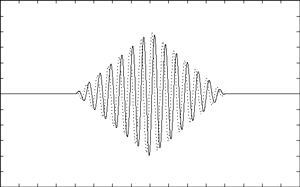Spectral efficiency analysis of digital signals for 3.1–10.6 GHz ultra-wideband radio systems
DOI:
https://doi.org/10.3103/S0735272711090019Keywords:
spectral efficiency, video signal, modulated signal, ultra-wideband radio systemAbstract
Spectral efficiency analysis of widely used types of digital signals in the 3.1–10.6 GHz frequency band is presented. Peculiarities of energy accumulation in the specified frequency band are demonstrated for video signals and modulated signals. Optimal durations, which provide maximum value of spectral efficiency, of the considered video signals are determined. Practical recommendations on using the considered digital signals in the 3.1–10.6 GHz ultra-wideband radio systems are concluded.
References
- Revision of Part 15 of the Commision’s Rules Regarding Ultra–Wideband Transmission Systems: First report and order : Technical Report FCC 02–48 (2002).
- I. Ya. Immoreyev, L. I. Telyatnikov, “Efficiency of using probing pulses’ energy in ultra-wideband radars,” Radiotekhnika, No. 9 (1997).
- F. F. Dubrovka and V. O. Tretiakov, “Limiting ratios between symbol rate and minimal carrier frequency in ultra-wideband digital information transmission systems,” Izv. Vyssh. Uchebn. Zaved., Radioelektron. 52(1), 3 (2009) [Radioelectron. Commun. Syst. 52(1), 1 (2009)].
- S. Maddula and S. Chekrabarti, “Synthesis of UWB Pulse Following FCC mask,” International Union of Radio Science, http://www.ursi.org/Proceedings/ProcGA05/pdf/CP3.10(01350).pdf.
- M. Ghavami, L. B. Michael, and R. Kohno, Ultra Wideband Signals and Systems in Communication Engineering (John Wiley & Sons Inc., 2004).

Downloads
Published
2011-09-12
Issue
Section
Research Articles

